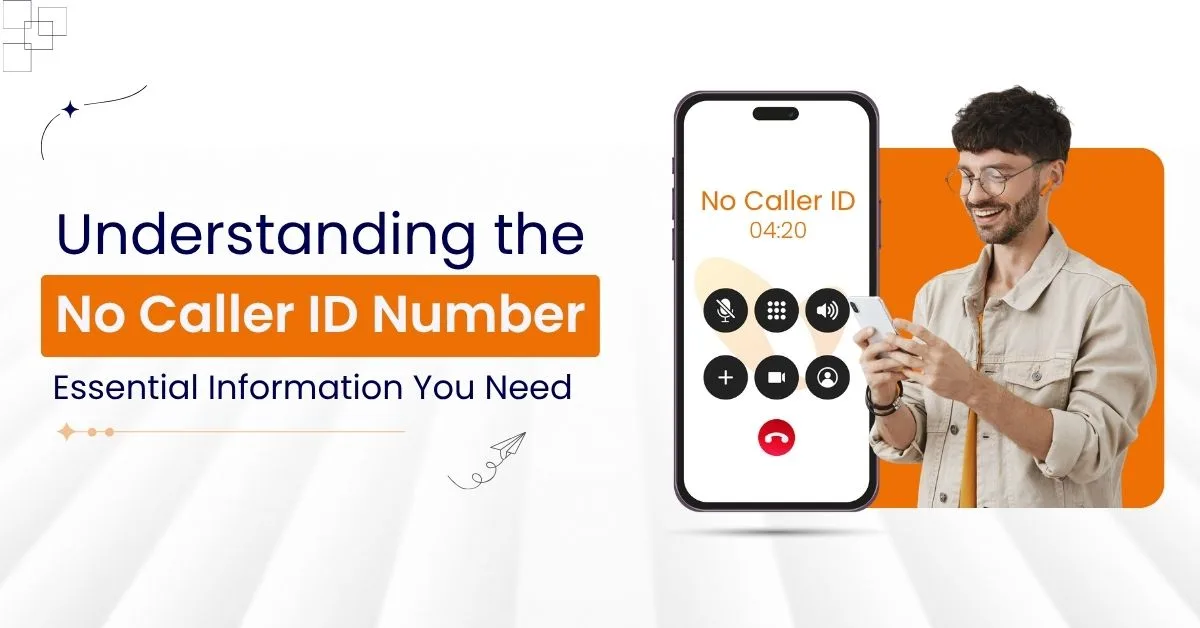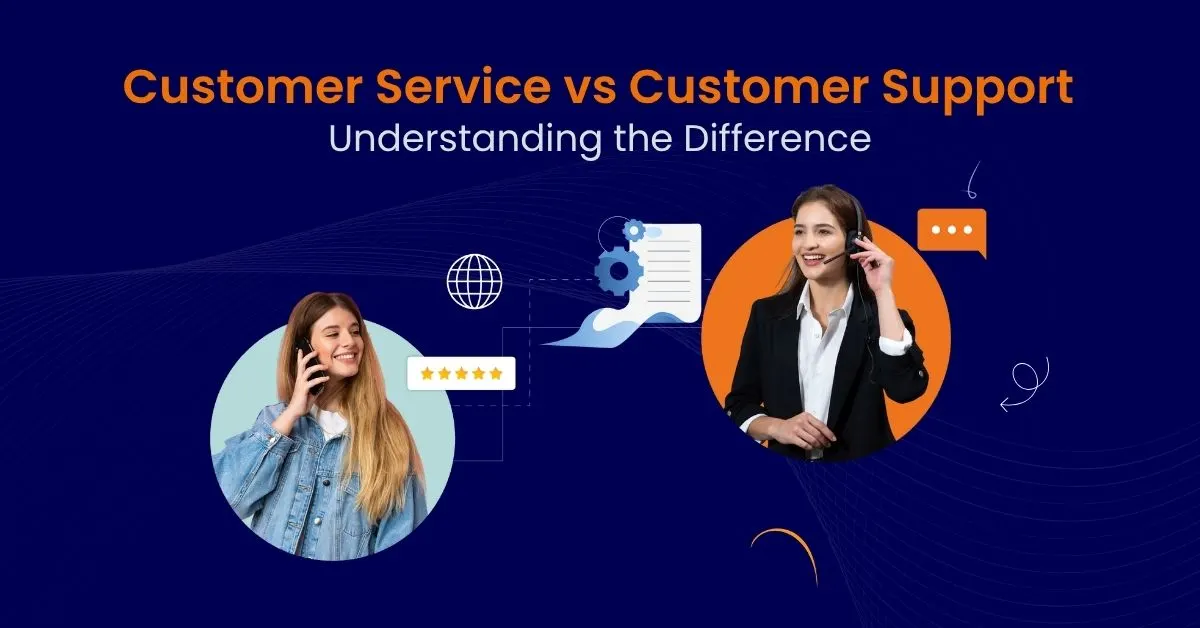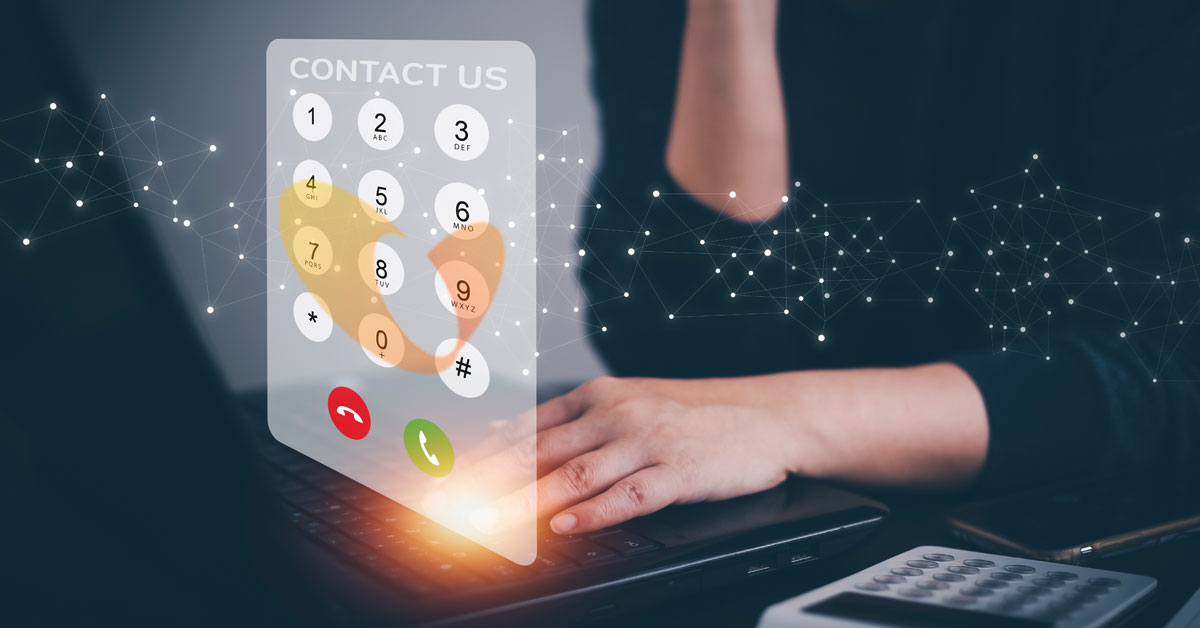How to Call a No Caller ID Number (Full Guide with Safe Methods)

8 min read
Table of Contents
Have you ever received a mysterious call flashing “No Caller ID” or “Unknown Number”—only to miss it and wonder who it was? You’re not alone. In fact, 73% of smartphone users report receiving anonymous or blocked calls every month (source: Truecaller Global Spam Report 2024). During such incoming calls with hidden numbers, the recipient’s phone screen will display messages like ‘No Caller ID’ or ‘Unknown Number’ instead of showing the caller’s actual phone number, masking the caller’s identity on the recipient’s phone.
While some of these calls are harmless—customer support, recruiters, or medical offices protecting privacy—others may be spam or scam attempts. Individuals and organizations may choose to conceal their mobile phone numbers to protect privacy, maintain anonymity, or for other reasons.
So, can you call a no-caller ID number back? And if so, how do you do it safely? Let’s break it down step by step in this friendly, fact-based guide built for the Vitel Global audience—where communication meets clarity.
What Does “No Caller ID” Actually Mean?
When a call appears as “No Caller ID,” “Private Number,” or “Unknown Caller,” it means the person on the other end intentionally hid their number. They’ve used a specific code, such as *67 in the U.S. or Canada, to block caller ID for a single call. By dialing this code before the number, the caller can block caller ID and make a single call anonymously without changing their phone’s permanent settings.
In simple terms:
Caller ID works by transmitting the caller’s phone number to the recipient’s device, allowing you to identify who is calling. When a specific code like *67 is used, it withholds the caller’s information, so your phone doesn’t receive their digits—there’s no number to display or redial.
Common Reasons for Hidden Numbers
Caller Type
Why They Hide ID
Why They Hide ID
To protect employee or outbound numbers.
Hospitals or doctors
Maintain patient confidentiality.
Marketers or surveys
Use masked calls for privacy or to maintain anonymity.
Scammers/spammers
To avoid identification or blocking.
Some callers use hidden numbers specifically to maintain anonymity, either to protect their privacy or for other reasons.
Can You Call a No Caller ID Number Back?
Technically, you can’t directly call back a number that displayed as No Caller ID — because your phone never captured it. This feature is often used to prevent return phone calls and to maintain the caller’s privacy. Such calls are common for both legitimate and suspicious reasons, and tracing who called can be challenging. But there are reliable ways to trace or reconnect safely using carrier services, apps, and smart communication systems.
Let’s explore them
Safe Methods to Call or Trace a No Caller ID Number
1. *Use 69 (Last Call Return)
Most North American carriers support this service.
How it works:
- Dial *69 within 30 minutes of receiving the last incoming call.
- After dialing *69, press the call button to initiate the return call.
- The system attempts to redial the last incoming call, even if the number was hidden.
- In some cases, you’ll hear a recorded message revealing the number of the last person who called you, depending on carrier support, or identifying if the call can be completed.
2. Request Call Records from Your Carrier
Your telecom provider logs all incoming connections, even masked ones. You can request a Call Detail Record (CDR) or Call Trace Report through customer support. Your phone company or phone carrier may also offer tracing services to help identify unknown or hidden callers.
They can show:
- Date & time of call
- Call duration
- Origin prefix (region or gateway)
3. Use a Caller ID Unmasking App
| App | Features | Average Accuracy |
| TrapCall | Unmasks hidden numbers, records calls, blocks spam | 90% |
| Hiya | Identifies business callers, filters robocalls | 85% |
| Truecaller Premium | Reverse lookup, caller reputation score | 88% |
4. Block or Silence Future Hidden Calls
If you don’t want to deal with unknown callers again:
On iPhone:
- Go to Settings → Phone → Silence Unknown Callers. This feature helps block or silence unknown calls on most modern phones.
On Android:
- Use Phone → Settings → Blocked Numbers → Block Unknown Callers. This setting is available on most Android phones and helps manage unknown calls.
Additionally, using a phone app with built-in caller ID and spam filtering can further help manage unknown calls on your cell phone. Many modern phones and phone apps offer these features to block, silence, or identify unknown calls and protect against scams.
Or, use AI-powered call filters available in Vitel Global’s Contact Center Solutions to flag suspicious numbers automatically before they reach your team.
5. If Calls Become Harassing—Report Them
If you receive threats or repeated harassment:
- Document date/time screenshots.
- Report the incidents to your carrier and your local law enforcement agency for further investigation, especially if you suspect scam calls.
- Law enforcement can subpoena carrier data to reveal the source.
Important: Never engage or share personal information with anonymous callers. Scammers may impersonate a government agency during scam calls, so always verify the caller’s identity before responding.
Why Do Some Companies Hide Their Caller ID?
It’s not always shady. Many organizations use private outbound numbers to maintain confidentiality, especially those using cloud-based VoIP or UCaaS platforms. Some organizations also use masked caller ID numbers to prevent return phone calls and to manage all No Caller ID calls efficiently.
For instance, Vitel Global enables enterprises to:
- Mask outbound caller IDs for sales or support.
- Display custom numbers (like a toll-free line).
- Log every call securely for compliance.
This helps protect both agents’ privacy and client data — a win-win for professional communication.
Technical Breakdown: How Caller ID Masking Works
When someone hides their number, they send a CLIR (Calling Line Identification Restriction) signal to their carrier. That signal removes the caller ID before routing the call to your device.
In simple words, your phone never “sees” the number, so it can’t store or trace it. This is how caller ID works: when the caller’s information and caller’s number are withheld, your device displays labels like ‘No Caller ID’ or ‘Unknown Caller.’ Caller ID vs Unknown Caller labels indicate different scenarios—’No Caller ID’ means the caller intentionally blocked their number, while ‘Unknown Caller’ means the network could not identify the caller’s information. Both labels relate to how caller ID and unknown status are managed by the system to hide the caller’s number and protect privacy.
Caller ID States
| Display on Your Phone | Technical Meaning | Possible Cause |
| No Caller ID | Caller manually blocked ID (*67) | Privacy or marketing call |
| Unknown | The network is unable to fetch the number | VoIP or foreign call |
| Private Number | Business or masked outbound call | CRM or VoIP system |
| Restricted | Legally protected caller | Government or medical service |
Reverse Lookup Services: Another Way to Identify Callers
Reverse lookup services offer a practical way to uncover the identity behind unknown callers, especially when you receive a call from an unknown number or someone who chooses to use No Caller ID. These online tools allow you to enter an unknown number into a search bar and, in return, provide details such as the caller’s name, address, and even their phone service provider. This can be particularly helpful when you’re dealing with potentially suspicious calls and want to know more before deciding to return the call or block the number.
Popular reverse lookup services like Whitepages and BeenVerified make it easy to search for information on unknown numbers. While some basic searches are free, more comprehensive results—such as full caller ID information or background details—may require a paid subscription. It’s important to remember that the accuracy of these services can vary depending on the data available, and not every unknown caller will be listed.
Using reverse lookup services can help you make informed decisions about how to handle unknown numbers, whether you want to block future calls, report them, or simply satisfy your curiosity about who’s behind the call. For businesses and individuals alike, these tools add another layer of protection against unwanted calls and help you stay one step ahead of unknown callers.
Using Voicemail Clues to Unmask Hidden Callers
Voicemail can be a surprisingly effective tool for identifying unknown callers, even when they use No Caller ID. When a caller leaves a voicemail, they might unintentionally reveal key details—such as their name, the organization they represent, or the reason for their call. By carefully listening to these messages, you can often pick up on subtle clues that point to the caller’s identity.
For example, a voicemail might start with, “Hi, this is Sarah from your healthcare provider,” or include context about an appointment or delivery. Even if the caller doesn’t state their name directly, the tone, background noise, or specific information mentioned can help you piece together who is calling and why.
If you ever receive threatening calls or messages from unknown callers, it’s crucial to save these voicemails as evidence. This documentation can be invaluable if you need to report the incident to your phone service provider or local law enforcement. By keeping a record of all calls and voicemails from unknown callers, you’re better equipped to protect yourself and take appropriate action if needed.
Federal Trade Commission Guidelines for Dealing with No Caller ID Calls
The Federal Trade Commission (FTC) offers clear guidelines to help individuals and businesses protect themselves from unwanted calls, spam calls, and phone scams—especially those coming from unknown numbers or callers using No Caller ID. The FTC recommends being cautious when answering calls from unfamiliar numbers, as these can often be attempts by malicious callers to gather personal information or perpetrate scams.
To reduce the number of unwanted calls, the FTC suggests using call-blocking features provided by your phone service provider or installing reputable third-party apps designed to block spam calls and filter out suspicious numbers. These blocking features can help you avoid potentially harmful caller ID calls and keep your phone free from unnecessary interruptions.
If you receive a suspicious or spam call, the FTC encourages you to report it to the National Do Not Call Registry. This not only helps prevent further calls from the same number but also assists in tracking and stopping phone scams nationwide. The FTC also provides resources for those who have been targeted by phone scams, including information on how to file a complaint and seek further assistance.
By following these guidelines and making use of available blocking features, you can significantly reduce your exposure to unwanted calls and protect your personal information from malicious callers. Staying informed and proactive is the best defense against the ever-evolving tactics of phone scammers.
Pro Tip for Businesses
If you’re a business owner receiving too many anonymous calls—or if your team uses hidden IDs for outbound calls—invest in a cloud phone system that lets you manage both sides.
With Vitel Global, you can:
- Auto-detect and log anonymous calls.
- Create dynamic caller IDs per campaign.
- Record and review masked calls for security.
- Integrate with CRMs like HubSpot or Salesforce.
Check out Vitel Global’s VoIP Solutions to see how smart caller analytics can protect and personalize every call.
Final Thoughts
Receiving a No Caller ID call can be unsettling—but now you know what’s behind it and how to respond confidently.
For businesses, Vitel Global brings full control—from caller masking to AI-powered analytics—keeping communication secure, transparent, and professional.
Because in the end, good communication isn’t just about talking—it’s about knowing who’s calling.
Take Control of Every Call — Stay private and secure with Vitel Global’s AI-powered VoIP solutions.
Frequently Asked Questions (FAQs)
1. Can I call back a No Caller ID number?
Not directly, but you can use *69, call trace services to identify or reconnect.
2. Why do some numbers show No Caller ID?
The caller intentionally hid their number using *67 or a VoIP masking setting. Unknown caller calls and No Caller ID calls are often used by individuals or organizations to avoid detection, making it harder to identify the caller.
3. Is it safe to answer No Caller ID calls?
Yes, but use caution. Don’t share personal or financial information unless you verify the caller’s identity. Note that “No Caller ID” and “Unknown Caller” (id or unknown caller) labels have different meanings: “No Caller ID” means the caller has deliberately blocked their number, while “Unknown Caller” usually means the network could not identify the caller’s information. Both can be used by scammers to avoid detection.
4. How do I stop No Caller ID calls?
Enable “Silence Unknown Callers” (iPhone) or use AI call filters like Hiya, Truecaller, or enterprise systems like Vitel Global.
5. What is the difference between No Caller ID and Unknown Caller?
No Caller ID means the caller has deliberately blocked their number, while Unknown Caller indicates that your phone service provider is unable to identify the caller’s information due to technical reasons.
6. Are No Caller ID calls always spam or scams?
No, not always. While many No Caller ID calls can be spam or scams, some are legitimate calls from doctors, businesses, or government agencies protecting privacy.
7. How can I protect myself from malicious No Caller ID calls?
Avoid answering calls from unknown numbers unless expected, never share personal information, use call-blocking features, and report suspicious calls to your carrier or local authorities.
8. Can I block all anonymous calls on my phone?
Yes, most smartphones allow you to block or silence unknown or private numbers through built-in settings or third-party apps.
9. What should I do if I receive threatening calls from No Caller ID numbers?
Document the calls, report them to your phone carrier and local law enforcement agency, and consider using call trace services like *57 to assist with investigations.
Published: October 31st, 2025
Subscribe to Our Latest Updates
Get monthly product and feature updates, the latest industry news, and more!





